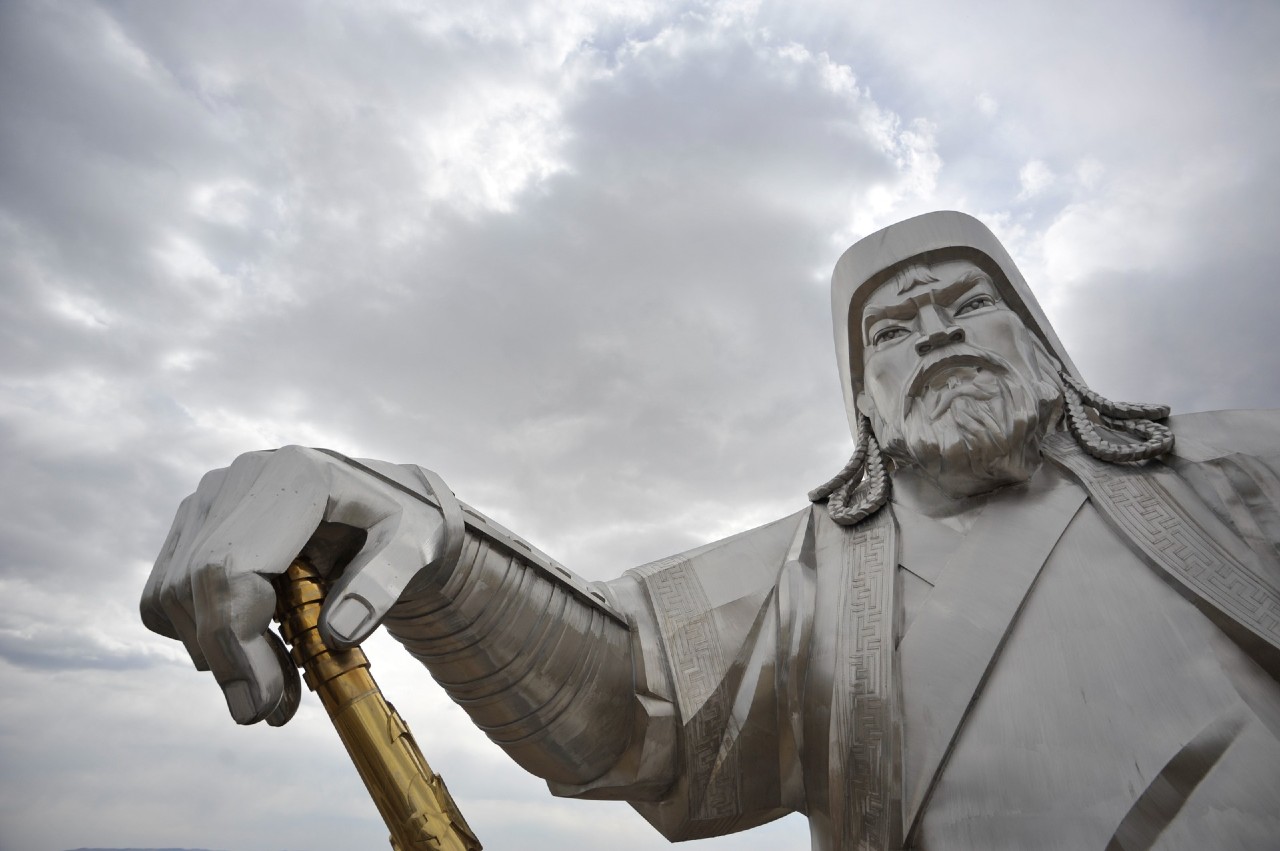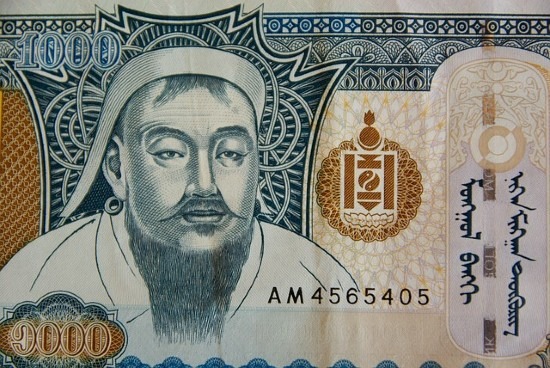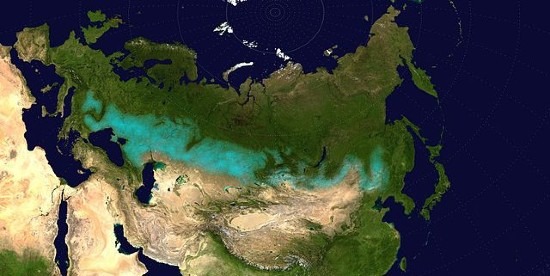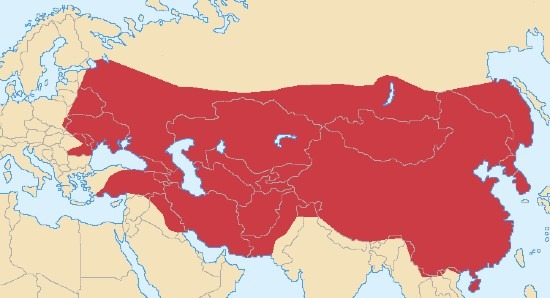MedievalReporter.com
Covering history's most marvelous millennium
Join our newsletter!

Covering history's most marvelous millennium
Covering history's most marvelous millennium

How were Mongol ruler Genghis Khan and his descendants able to create the largest land empire in history? Did climate change in any way contribute to their ability to outplay their opponents? And if the weather did turn in their favor, why didn’t their enemies profit as well?
Grab a short intro to the Mongols from our Medieval Guidebook.
For a long time, historians believed it was drought that pushed the Mongols to leave their homeland. Why but for a lack of resources would these ‘barbarian’ nomads invade fertile, sedentary and cultured civilizations? Or so the reasoning ran.
Now, studies increasingly show that it was actually an abundance of resources that spurred the Mongol expansion. It took tremendous windfall gains to found the largest land empire the world ever knew. And it seems climate change provided just that.
The Mongol Empire was founded in 1206 CE by Genghis Khan. The years before his ascendancy to the throne, the rough 1180s and 1190s, witnessed major droughts. This period of dearth had fractured Mongol society into different tribes.
A political vacuum arose that allowed Genghis to concentrate power. He tamed the tribes and forged them into an empire. With an ambition to extend his influence even further, the climate decidedly turned in his favor.

– advertisement –
– article continues below –
The Mongols were steppe people. They lived on the eastern part of the seemingly unending flatlands stretching from Bulgaria and Romania in the West to Manchuria in the East: the Eurasian Steppe. Visitors foreign to the area have dubbed it the Sea of Grass.
Recent research of tree rings in Mongolia indicates that during most of Genghis’s reign, the weather was wet. From 1211 to 1225, the grasslands in the core of his nascent empire experienced above-average rainfall and mild weather. A 15-year run of back-to-back moist and fertile years seemed to bless the reign of the new Khan. (Genghis ruled from 1206 to 1227.)
For a nomad and pastoral people such as the Mongols, the outcome could not have been better. The abundant rainfall made the grass grow in amounts not seen in ages. This, in turn, enabled an expansion of livestock that would have been unable to sustain in drier years.

Already used to keeping more than one horse per man, the wet weather allowed Mongol warriors to keep over five mounts per soldier. This meant that when on campaign, the khan’s soldiers always had a fresh horse at their disposal. Thus, Mongol generals were able to cover distances that simply baffled their enemies.
In short, next to organizational innovations and an ambition on a universal scale, Genghis Khan was able to ride a wave of rain and good fortune. His mostly mounted forces spread across the sea of grass like an oil spill. To the west, in Central Asia, they encountered even more effects of climate change that worked to their advantage.
Historically, Central Asia had been the nexus of the Silk Road. The area functioned as a ‘land bridge’ between China on the one hand and Persia and the Middle East on the other. Cities such as Samarkand sprung up near caravan stops and grew wealthy.
Especially the area along and between the great Amu Darya and Syr Darya rivers gave rise to prosperous empires. (To classical readers these waterways are better known under their Latinized names: the Oxus and the Jaxartes.) One would think these civilizations would have been able to put up fierce resistance to the Mongols storming in from the east.

However, during Genghis Khan’s rise to power, the climate in Central Asia had changed as well. Whereas the land of the Mongols experienced wet weather, the Amu and Syr Darya basins were struck with extensive drought. Recent findings suggest that this was the ultimate cause for the demise of these mercantile river cultures.
Because of low water conditions, irrigation systems had been moved upstream. This failed to produce the desired results, however. The area was in disarray right at the time the Mongol columns arrived.
In the event, Central Asia fell rapidly to the Mongol onslaught. The additional resources of the region accelerated the stellar rise of Genghis Khan’s new empire. Its westward expansion also brought it into direct conflict with the Persian shah, the outcome of which irreversibly catapulted the Mongols onto the world stage.
Many a book has been written about Genghis’s rise to power and how the Mongols managed to conquer the largest land empire in world history. Usually, this success is attributed to the innovative organization of the Mongol army and the skill of its warriors. This only covers why it happened, though.
Thanks to climatic research, we now possess answers as to why it happened when it happened. We can see the effect of climate change in our own day and age. Fortunately, historians are starting to use this data to research its effects on earlier civilizations, too.
It seems Genghis Khan, first Great Khan of the Mongol Empire, had a double stroke of luck. Not only did an exceptional amount of rainfall drop on his grazing grounds, but a turn of the climate also withered the soil of his Central Asian neighbors. The fruit was ripe for plucking.

Combined with his successful campaigns against Imperial China, the conquest of Central Asia created windfall gains that propelled the Mongols ever further. Genghis’s generals and (grand)sons would eventually carve out an empire stretching from Korea to Ukraine. The Mongol menace left a significant mark on world history.
Disclosure: we work hard to provide you with exclusive medieval reports and guides. To make the Middle Ages accessible to everybody, we’d like this information to remain FREE. Therefore, some of the links below are affiliate links, meaning – at no additional cost to you – we will earn a small compensation if you click through.
Comments are closed.
Admiring the time and effort you put into your website and in depth information you offer.
It’s awesome to come across a blog every once in a while that isn’t the same old material.
Fantastic read! I’ve bookmarked your site and I’m including your RSS feeds to my Google account.
Thank you very much for your kind commentary, Freda. Glad you liked it and thanks for bookmarking!